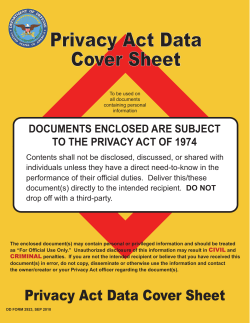
Qt® Conference Room Edition System Layout Guidelines
Qt Conference Room Edition System Layout Guidelines ® 1 Determine where to put the emitters ・ The shape of the conference room will primarily dictate where to put the emitters. ・ The goal is to provide privacy around the entire perimeter of the conference room; while many conference rooms will only have a single wall adjacent to other areas, some may have multiple demising walls that should be considered. Adjacent spaces to the conference room that ・ should be treated might include: open office areas, private offices, corridors, storage rooms, break rooms, etc. 2 Determine the number of emitters ・ The number of emitters is primarily based on the size and shape of the conference room. Emitters should be located along the outside of all the walls of the conference room; this includes adjacent spaces such as open office areas, private offices, corridors, storage rooms, etc. ・ Conference rooms with speech reinforcement or other amplified sound such as computer playback of speech ・ No plenum barrier above the conference room demising wall ・ Emitter spacing should generally follow CSM’s guidelines for open office sound masking layouts, as follows: ・ If the design requires multiple zones to protect speech privacy, consider a QtPro™ system. 3 Determine control module & privacy sign placement ・ If no automation control system is being used, find a location inside the conference room that is convenient for occupants to both see and use the controller. ・ If an automation control system is being utilized to control the system, locate the controller in a cabinet or nearby closet; this gives the user a single method for controlling the system and cuts down on confusion. ・ Two LED privacy signs are provided, locate one inside the room and locate the other outside the conference room, adjacent to the main door. ・ Use of both signs is recommended but not required. Coordinate with your client. cambridgesound.com ・ For most applications, two rows of emitters are sufficient; however some situations may dictate that more than two rows are necessary to provide the level of acoustic privacy required: info@cambridgesound.com Ceiling Height ・ Open ceiling shared by conference room and protected areas ・ Glass or demountable partition demising walls ・ Unusually quiet exterior spaces (less than 38 dBA ambient) Emitter Grid Spacing Less than 8’ 5”(2.6m) 8’(2.5m) by 8’(2.5m) 8’ 6”(2.6m) to 11’ 6”(3.5m) 10’(3m) by 10’(3m) 11’ 7”(3.5m) and above 12’(3.7m) by 12’(3.7m) ・ Highly sound reflective or reverberant spaces 4 Consider accessories 5 Follow installation best practices ・ Universal Bracket – allows the emitter to be installed in open plenum designs or mounted to a vertical surface. ・ Drywall Mount – provides flush mount for emitters located in drywall/gypsum.ounted to a vertical surface designteam@cambridgesound.com 800.219.8199 ・ Place the first row of emitters adjacent any party wall between the conference room and exterior spaces at ½ the height of the ceiling or less. For example, for a 10 ft (3 m) ceiling place the first row no more than 4 or 5 ft (1.2 to 1.5 m) from the wall. ・ Emitters are daisy-chained together with the supplied CAT-3 cables. Proper observation of “Input” and “Output” connections on the emitters is required to ensure system functionality ・ All emitters are individually adjustable in 3 dB steps via a set of dip switches on the back of the emitter; -3dB, -6dB, and -9dB Qt Conference Room Edition System Layout Guidelines ® Example: Conference room with one exposed wall Example: Conference room with two exposed walls Example: Conference room with three exposed walls Example: Conference room with four exposed walls cambridgesound.com info@cambridgesound.com designteam@cambridgesound.com 800.219.8199
© Copyright 2025










